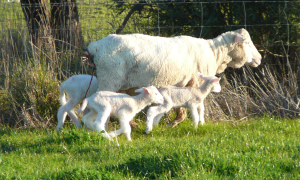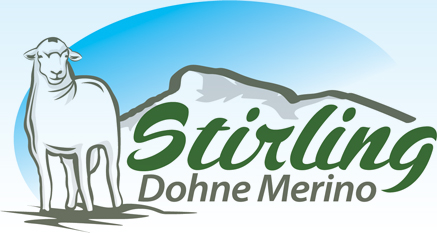It must be remembered that EBVs are estimates and not actual and subsequently do not  necessarily record the bottom line. Being closely related to appetite it is very useful for selecting terminal lamb sires where the lamb is raised and finished during the spring flush to match this appetite.
necessarily record the bottom line. Being closely related to appetite it is very useful for selecting terminal lamb sires where the lamb is raised and finished during the spring flush to match this appetite.
Its relevancy however is diminished dramatically when selecting for maternal productivity where high maintenance ration costs fed during times of low feed availability can decimate the bottom line of high EBV sheep.
DWR is designed to deliver less kilos of dam weight for every kilo of lamb weaned during the flush so availing decreased maintenance feeding during the off season shortage. Breeds of recent crossbreeding and crossbreeds accentuate this high appetite whilst purebreds decrease it. By joining purebred ewes to purebred terminal sires you receive the very best of this potency for the least maintenance cost.
At ‘Stirling’, DWR is also accrued from season to season and generation to generation. For instance ST070003 has a Daily Wean Ratio of 1.34 for year 2013 but when added to the accumulation of the previous 4 years and divided by 5 her Accrued DWR becomes 5/0.94 and she now inherits this figure for season 2014.Her progeny ST130431 and ST130432 also inherit this generational figure for when they lamb in season 2015 excepting that the 5/0.94 seasons now revert back to 1/0.94 season.
The increased seasonal length south of the divide provides ADWR with increased maternal benefit over EBV yet the reverse is true for terminal benefits. ‘Stirling’ leans strongly towards AWDR for selection. but is vitally aware of the benefits EBV’s have provided the Dohne breed in years past.
Other than numbers and weight the other important factor is conversion efficiency. The conversion rate of fish at 1.2 – 1 reflects the lack of skeletal structure due to water support and the very small temperature variation in water compared to air. The conversion rate of chicken at 2 – 1 reflects the smaller size, good climate control and the diminished skeletal support as evidenced by their inability to walk adequately. The conversion rate of pig at 3 – 1 reflects larger size, some climate control and impinged walking ability. The conversion rate of lamb at 4 – 1 reflects larger size and zero climate control. The conversion rate of cattle stands at 7 or 8 – 1. The dinosaur became extinct for more than one reason.
The Angus breed follows similar EBV’s to that of the Dohne breed. Already they are having fertility problems when crossed with the Braham breed in Queensland and are combating this by increasing muscle. This procedure will move the breed closer to terminal breeds such as Charolais. You rarely see large herds of commercial Charolais cattle simply because the off season maintenance cost is too large.They are terminals. Angus are in some danger of loosing their once prized position of the most prolific maternal simply because the grass seems greener on the far side of the fence or a new fad is greasing the steering wheel.
Now if we multiply numbers by weight by conversion efficiency we arrive somewhere in the vicinity of bottom line. Wean ratio is a balance of these 3 measurements.
The elephant in the higher productivity room is taste. The terminals are making a poor fist of it at the moment. Gone are the days of the tasty Shropshire carcases of the 20’s and the small dense fine South-down roasts of the 50’s. The present fad is purely dollar driven.
Subjectively selecting for maternal sheep type is a very difficult procedure. Some would believe soft wool and high fat is the way to go, others muscle, perhaps because that is the way we see it in the human world.
Whether we gain desire for size from our opposites sexual expression points or simply increasing triumph of power over size as it increases it obviously has little to do with bottom line.
I personally escape this empowerment by breeding the attractive English Longhorn out of their descendants the Hereford Horn in very small numbers. This enables me to get on with the simple profit drivers in the sheep flock. Measurement is not the only component of bottom line, happiness, sheep type and other members of the subjective family carry rank.
~Murray Rogerson – September 2014
